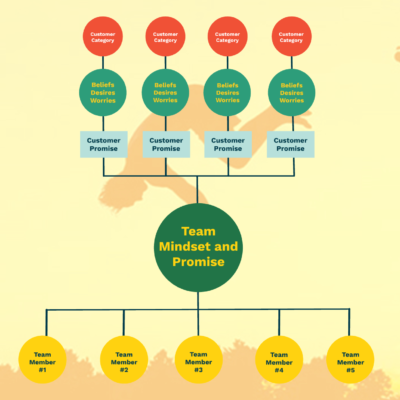Put Engagement Before Planning
When we try and create a “one team” culture, we align the wrong things at the wrong time. Typically, management defines the strategies, goals, roles, and metrics and cascades them throughout the organization. Then, they undergo a series of efforts to engage employees in the new structure and plans.
However, senior-leader-roadshows, lunch-and-learns, breakroom posters, and CEO videos don’t get the intended results. In 2019 sixty-six percent of employees surveyed by the Gallup organization said they were looking for other work or just phoning it in. Compared to other years, the thirty-four percent engagement rate was considered high. Something is wrong.
Engaging employees should happen before planning efforts get started. Not practical, you say? The standard ‘planning first, engagement second’ approach creates costly results in low productivity, quality, innovation, retention, coordination, and teamwork. This management style is reminiscent of a by-gone command-and-control era. The unspoken employer-to-employee contract says, “We’ll tell you what to do and then hope you love doing it.” This approach is reminiscent of arranged marriages; parents find their children mates hoping the nuptials will grow to love each other after the wedding.
After 25 years of working at the employee, team, C-Suite, and Board levels in dozens of organizations nationally and internationally, I discovered a simple truth about human behavior: actions follow mindset, and promises fuel action. Not rocket science. Yet, we don’t organize our companies for learning and engagement. We structure our companies for execution.
A purpose-centered mindset and a promise to add value should be understood and synergistically support each level of the organization: employee, team, organization, and ending with the customer or end-user. This upstream activity (mentioned later) primes the pump for all planning, including strategic planning, company branding, team development, succession planning, leadership development, and process improvement efforts.
This “engage first, plan second” approach is the backbone behind a facilitation process called Organizational Value Alignment. It aligns the employee, team, organization, customer around two things: A purpose-centered mindset and a promise to add value. Here is some background.
Common challenges:
- We miss opportunities and risk by developing only one part of the business instead of the interdependent whole,
- Employees don’t see how they add value beyond their efforts to the team, organization, and the customer,
- We tend to address the symptoms and not the source.
Opportunities these challenges are pointing us toward:
- We need a road map that aligns the individual to the team, from the team to the end-user or customer,
- Each level of the organization needs to articulate the unique way they add value to others,
- We don’t always need more information. We need a way to translate knowledge and create new habits,
- We need an “upstream” tool that helps us answer fundamental questions vital for all the significant aspects of employee, leadership, and organizational development.
To address these challenges and meet these opportunities, we’ve facilitated several teams using the Organizational Value Alignment process. It’s a five-step roadmap.

Customer Category: Identify 3-5 customer categories. For example, the senior team might have employees, a Board of Directors, distributors, and a specific kind of end-user.
Beliefs, Desires, Worries: Determine the beliefs, desires, and worries for each customer category. This will help in future steps.
Customer Promise: What is the highest value you’d like to help your customer experience? For example, a car dealer wouldn’t say his or her customer promises is to sell high-end cars. Instead, it might be to provide their customer the experience of freedom and adventure. The customer promise becomes the “why” for the organization or team.
Team Level: Determine what the ideal team looks and feels like. Then, determine the kind of mindset and team-member promises needed to achieve this high level of teamwork. If the customer is to transform, then so does the team supporting them.
Team Member Level: What mindset is needed by the team member, and what kind of promise does he or she make to themselves and fellow teammates that make them worthy of being on the team?
A purpose-centered mindset and a promise to add value is the foundation for real organizational alignment. When employees go through a facilitated process using this model, they engage and become a real team. And all other planning and development efforts on the organizational, team, and employee levels are far more successful.
Key takeaways:
- Engage your people before undergoing serious planning,
- Align employees, teams, the organization, and the end-user-customer with a purpose-centered mindset and a promise to add value,
- Identify customer categories and their beliefs, desires, and worries,
- Create a promise for each customer category,
- Build the foundation for great teamwork by setting the right team mindset and set of team promises,
- Have each employee commit to a mindset and set of promises that make them great team members.
- Organizations are usually structured for execution – not for learning.
“MOST ORGANIZATIONS ARE STRUCTURE TO EXECUTE. THEY AREN’T STRUCTURED FOR LEARNING.”
– Marilyn Gist, The Extraordinary Power of Leader Humility.

